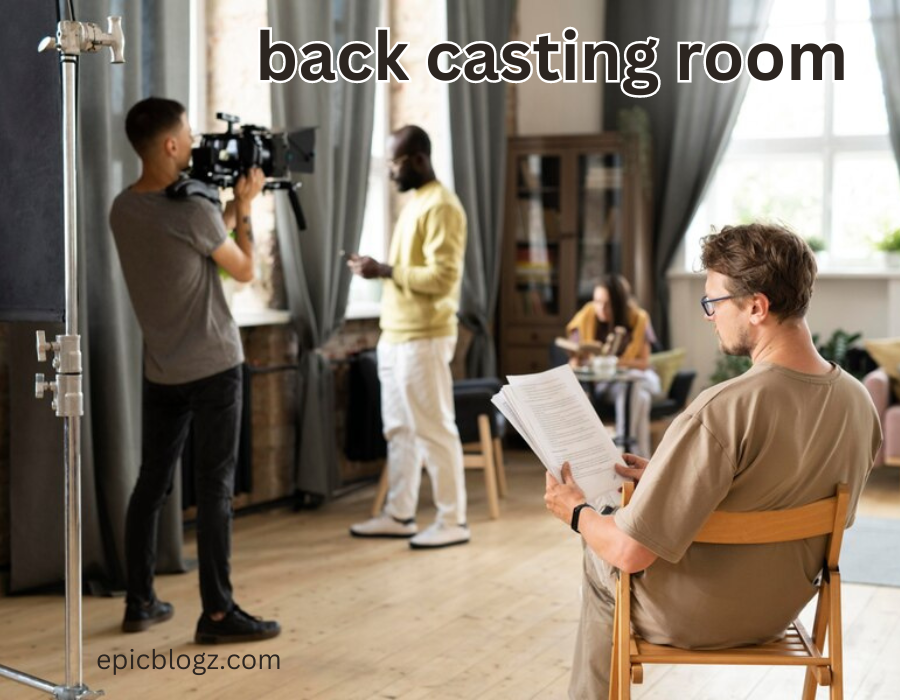Introduction: The Unsung Hero of Filmmaking
Every successful film begins with a strong foundation, and casting is one of the most critical elements in that process. The back casting room serves as the heart of this foundation, where talent is evaluated, characters are brought to life, and creative collaboration flourishes. It is here that the magic of storytelling begins long before cameras start rolling. By understanding the role of the back casting room, we not only highlight its significance but also shed light on how it contributes to the overall success of a film or television production.
What is a Back Casting Room?
Key Features of a Back Casting Room
- Professional Equipment: Back casting rooms are often equipped with high-quality lighting, sound systems, and cameras to ensure that auditions are captured at their best quality. This setup allows for accurate evaluations of an actor’s performance.
- Privacy: These rooms provide a confidential setting for auditions, allowing actors to perform without distractions or concerns about being overheard or seen by outsiders.
- Comfortable Environment: Comfortable seating, proper ventilation, and a quiet atmosphere help actors feel at ease and perform to the best of their abilities.
- Collaborative Space: The back casting room fosters collaboration between directors, producers, and actors. It serves as a workshop where ideas can be exchanged freely, making it easier to explore different interpretations of characters and scenes.
Why is the Back Casting Room Important in Filmmaking?
The back casting room plays an essential role in the filmmaking process for several reasons:
1. Enhancing Performance Quality
In a back casting room, actors have the opportunity to rehearse their lines and explore their characters without the pressure of being on set. This practice helps them refine their performances before filming begins. Directors can provide immediate feedback, allowing actors to adjust their interpretations based on guidance.
2. Building Chemistry Among Cast Members
Casting often involves pairing actors together to see how they interact on screen. The back casting room allows directors to test different combinations of actors and assess their chemistry before making final decisions about casting. This process ensures that the ensemble cast works well together, which is vital for creating believable relationships on screen.
3. Streamlining the Casting Process
By conducting auditions in a dedicated space like a back casting room, filmmakers can streamline their casting process. They can efficiently evaluate multiple actors for various roles in one location without needing to set up different environments for each audition.
4. Facilitating Creative Exploration
The back casting room serves as a creative hub where directors and actors can experiment with different approaches to scenes. This freedom allows for innovative ideas to emerge that may not have been considered during initial script readings or discussions.
5. Reducing Production Risks
By thoroughly vetting talent in a controlled environment before filming begins, filmmakers can minimize risks associated with poor casting decisions. A well-cast project is more likely to resonate with audiences and achieve critical success.
How Does a Back Casting Room Work?
The operation of a back casting room involves several key steps that contribute to its effectiveness:
1. Audition Scheduling
Casting directors coordinate audition schedules for actors based on availability and project timelines. They send out notices for auditions and manage submissions from talent agents or directly from actors.
2. Preparing Actors
Actors arrive at the back casting room prepared with their audition materials—this may include monologues, sides (script excerpts), or other performance pieces relevant to the roles they are auditioning for. They use this time to practice their lines, get into character, and showcase their skills.
3. Conducting Auditions
During auditions, actors perform their selected pieces while being recorded or observed by directors and producers present in the room. The atmosphere is typically professional yet supportive, encouraging actors to give their best performances.
4. Providing Feedback
After each audition, directors provide feedback to actors—this may include suggestions for adjustments or praise for strong performances. This immediate feedback loop helps actors improve their craft while allowing directors to gauge how well each actor fits into their vision for the project.
5. Decision-Making
Once auditions are complete, directors and producers review recordings and notes from each session to make informed decisions about which actors will be cast in specific roles. This collaborative decision-making process ensures that all perspectives are considered before finalizing cast selections.
The Role of Directors in the Back Casting Room
Directors play a crucial role in shaping both the atmosphere and outcomes within the back casting room:
Guiding Performances
Directors observe auditions closely, offering constructive criticism aimed at helping actors improve their performances while staying true to character intentions outlined in scripts. They provide guidance on how to bring the characters to life and ensure that the actors’ interpretations align with the director’s vision for the film.
Experimenting with Ideas
The back casting room provides an opportunity for directors to test out different concepts or approaches with various actors—this experimentation can lead to unexpected breakthroughs that enhance storytelling. Directors can explore different blocking, line readings, and emotional beats with actors to find the most effective way to bring the script to life.
Assessing Chemistry
Directors use this space not only to evaluate individual performances but also to assess how well potential cast members work together—this chemistry is vital for creating believable relationships on screen. By pairing actors together during auditions, directors can observe their interactions and determine if they have the necessary rapport to portray the characters’ relationships convincingly.
Actors’ Experiences in the Back Casting Room
Actors often have unique experiences during auditions held in back casting rooms:
Preparing for Auditions
Actors typically spend time preparing their materials ahead of time; this preparation helps them feel confident when they enter the audition space. They may practice their lines, explore different interpretations of the character, and even research the film or television show they are auditioning for to better understand the context of the scene.
Receiving Feedback
Many actors appreciate receiving immediate feedback from directors during auditions—this guidance allows them to adjust their performances on-the-fly based on what resonates with decision-makers. Actors value the opportunity to collaborate with directors and receive constructive criticism that can help them grow as performers.
Building Confidence
Auditioning can be nerve-wracking; however, performing in a supportive environment like a back casting room helps build confidence among actors as they showcase their talents. The privacy and professionalism of the space allow actors to focus on their performances without external distractions or judgments.
Creative Moments in the Back Casting Room
The back casting room is often filled with creative energy as both directors and actors collaborate:
Brainstorming Ideas
During auditions or rehearsals within this space, spontaneous brainstorming sessions may occur—actors might suggest alternative interpretations of scenes while directors explore new filming techniques. This exchange of ideas fosters an environment of creativity and innovation.
Exploring Character Depths
The collaborative nature of these sessions allows everyone involved to delve deeper into character motivations—this exploration enriches storytelling by uncovering layers that may not have been apparent initially. By working together to understand the characters’ emotional journeys and backstories, directors and actors can create more nuanced and compelling performances.
Fostering Innovation
By providing an open forum for experimentation without judgment or pressure from filming schedules, back casting rooms foster innovation that can lead to unique artistic choices throughout production processes. Directors and actors are encouraged to take risks and try new approaches, which can result in groundbreaking performances and memorable moments on screen.
Conclusion
In the ever-evolving world of filmmaking, the back casting room remains a vital component in the process of bringing stories to life on the silver screen. As directors and actors collaborate within these specialized spaces, they unlock the potential for creating unforgettable characters and captivating narratives. By understanding the significance of the back casting room and the role it plays in shaping the final product, we gain a deeper appreciation for the art of filmmaking and the dedication of those who work tirelessly behind the scenes to make movie magic happen.
ALSO READ: Flixtor.to: Your Go-To Hub for Movie Night!
FAQs
1. What exactly happens in a back casting room?
In a back casting room, actors audition for roles while directors evaluate performances and provide feedback. It serves as a collaborative space for refining character portrayals before filming begins.
2. How does using a back casting room benefit filmmakers?
Using a back casting room enhances performance quality by allowing thorough evaluations of talent while fostering chemistry among cast members—all contributing factors toward successful productions. It also streamlines the casting process and facilitates creative exploration.
3. What equipment is typically found in these rooms?
4. Can any actor audition in these spaces?
Yes! The back casting room provides an equal opportunity for actors of all backgrounds and experience levels to showcase their talents.
5. Why is chemistry important during auditions?
Chemistry between potential cast members is crucial because it affects how believable relationships appear onscreen. Strong chemistry enhances storytelling by making interactions feel authentic and engaging for the audience.







